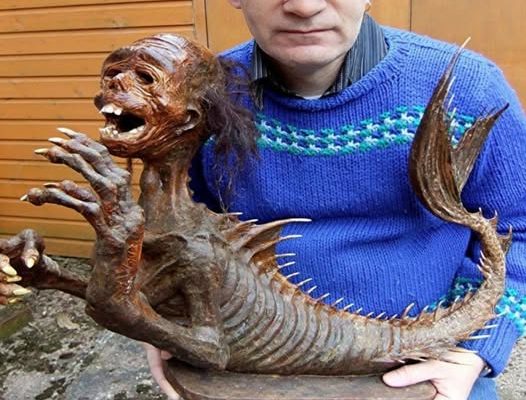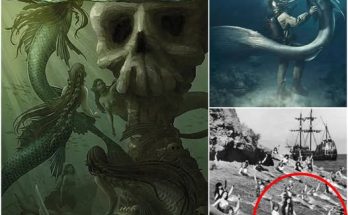Reykjavik, Iceland – A shocking discovery has rocked the global archaeological community: what are believed to be the bones of a “mermaid” have been found in a coastal cave west of Iceland.

During an excavation in a little-known area near Breiðafjörður Bay, a team of scientists from the University of Iceland unearthed a strange skeleton buried in layers of sediment hundreds of years old. This skeleton has a unique structure: the upper part resembles that of a human being with ribs and arm bones, while the lower part is elongated, ending in a structure similar to a fish fin.
According to Dr. Ingrid Jónsdóttir, leader of the research team, the skeleton is approximately 1,000 years old, corresponding to the Viking Age. “We have never seen anything like this before. This could be evidence of an undocumented creature or a particular form of evolution,” Jónsdóttir said at a press conference.
Nordic legends have for centuries told stories of half-human, half-fish beings known as “hafmeyja” – mermaids in Icelandic. Could this be a confirmation of these stories or simply a scientific misinterpretation?
Scientists are currently analyzing DNA from bone samples to determine whether the skeleton belongs to a human or an unknown animal species. Some researchers suggest that it could be the skeleton of a large marine mammal, such as a dolphin or seal, deformed by environmental conditions. 
However, Dr Jónsdóttir said: “The way the bones are articulated and the structure of the supposed fin make this theory difficult to sustain. We need more time to understand it better.”
This discovery has not only sparked debates in the scientific community, but has also generated excitement among cultural and historical communities. Many local residents believe that this could be evidence of stories passed down through generations.
“We grew up with tales about hafmeyja. Now it seems that they might not be just myths,” said one local resident. 
The research team plans to publish the first results of the analysis within the next six months. In the meantime, the skeleton will be kept at the National Museum of Iceland, where the public will be able to view it and reflect on this enigma.
Could this discovery rewrite the history of mythological creatures? Or is it simply a mistake of nature? Only time and science will be able to reveal the truth.



